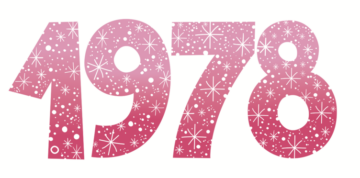I think you’ll all agree I am pretty gorgeous these days, with an innate style that can’t be taught. Hard to believe, but this was not always the case.
It is 33 years since I started as a Graduate Trainee at Ogilvy & Mather and what I remember most vividly was the appalling quality of my work clobber. Despite it being the 1980s, a time of testosterone, ambition and hedonistic partying, I sadly looked more Gordon Geeky than Gordon Gekko.
Fuelled with ebullience and self-satisfaction at having secured a job, I rushed straight to the fashion emporium C&A to buy my first work-suit. If you don’t remember C&A, it was the shop your mum took you to when the queue was too big at M&S. My suit was double-breasted and made of a material that could best be described as highly flammable. What did I care? I was starting work, and this was my first uniform.
Like the rest of the country, the demands of Zoom, the absence of an office commute, hot weather and general global nihilism means I am living in a tee shirt and trainers nowadays. Interestingly my student son is about to start a job today as a carer for the summer. Instead of wearing one of his rancid tee shirts that most charity shops would reject, he has put on a shirt to start his training. The convention of dressing appropriately is clearly hard to abandon.
Fashion and appearance have always been a source of discrimination and prejudice. What you wear reflects your outlook on the world. Being different can most easily be expressed through defying expected behaviour.
History shows that fashion iconoclasm is a sign of ambition. In the Nineteenth Century, Benjamin Disraeli was famous for describing his political ascent as climbing the ‘greasy pole’ and he had an adroit sense of how to use his sense of style as part of this journey. As an outsider and novelist, he rose to power on the back of a unique dandyish dress sense. He wore, according to an affectionate observer, “a scarlet waistcoat, long lace ruffles . . . white gloves, with several brilliant gold rings outside them.” For Disraeli, worse than being laughed at was not being noticed.
More often a rigid mode of dress can suggest that political and business leaders want to wear a consistent uniform and not be distracted by the mundane demands of daily clothing choice. Winston Churchill wore his famous ‘romper suit’ for ease in the war and look how well that worked for him. Chairman Mao donned the natty ‘Mao Suit,’ which was actually inspired by the equally chic ‘Stalin’s tunic’. More recently, Barack Obama failed to create an eponymous garment of his own. Rather, he explained how difficult it was to lead a superpower and chose your socks every day. “You see I wear only grey or blue suits. I’m trying to pare down decisions about what I am eating or wearing. Because I have too many other decisions to make.”
A consistent outfit is often about creating a brand, however much the individual may pretend not to care about what is worn. Steve Jobs became famous for a black turtleneck, 501 jeans, and New Balance sneakers. He wore this in the office and at home, liking the simplicity of its repetition, even if he got a bit hot in the summer. Primarily, it was also a statement about his maverick personality, eschewing the formality of a suit at a time when they were still prominent in tech.
Most of us are much more conventional in matching our clothing selection to prevailing cultural expectations. We may all hate to make a daily wardrobe choice, but we rarely make a bold statement of individuality. Partly this is how we have been taught to conform. Only 10 years ago, UBS brought out a 44-page set of dress guidelines for its employees. The rigid directives suggest we had got the Swiss wrong when we thought they were benign and neutral. (If you think the points below are didactic you should read what they said about jewellery and facial hair.)
“A flawless appearance can bring inner peace and a sense of security.”
“Adopting impeccable behaviour extends to impeccable presentation.”
“The garment is a critical form of non-verbal communication.”
Where does this leave us all in a post-Covid fashion apocalypse? It seems inevitable that we will not want to go back to formality and be free to express our individuality through our sartorial slovenliness. When I worked in the account management department in advertising, I was contemptuously known as one of the ‘Suits’ not because I looked like Meaghan Markle. Rather, my smart attire was synonymous with the grubbiness of commerce in a creatively driven environment.
What is important today is not to be constrained by expectation. Do you have to look smart in an interview, formal presentation to a client or a board meeting? It is really up to you as there is always the risk of someone being judgemental about your appearance and what it allegedly suggests. Hopefully however, we can collectively look beyond such superficialities to the substance of the individual and properly create equality of opportunity for all. The elimination of prejudice can be achieved in many different ways and a rigid adherence to a dress-code is increasingly anachronistic.
The removal of a uniform and formality has been liberating for me. I have never looked trendier, even if you have to take my word on this one. Still I can’t wait to wear one of my many furloughed suits hanging in my wardrobe. It will be elegantly accessorised by trainers and a bandana to separate me from the crowd. Trust me, it’s a great look.



